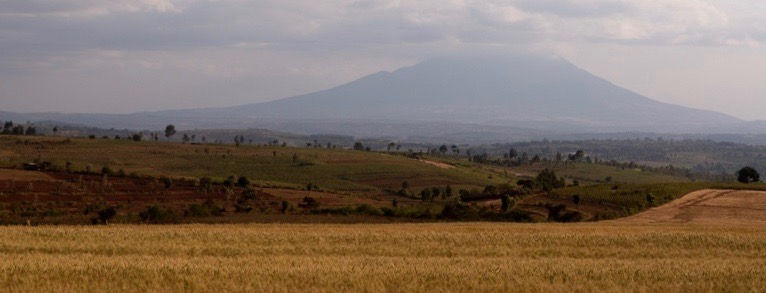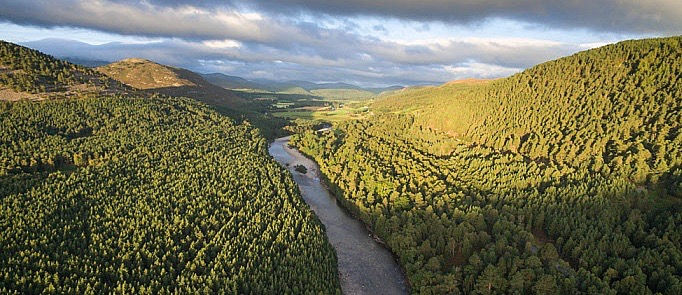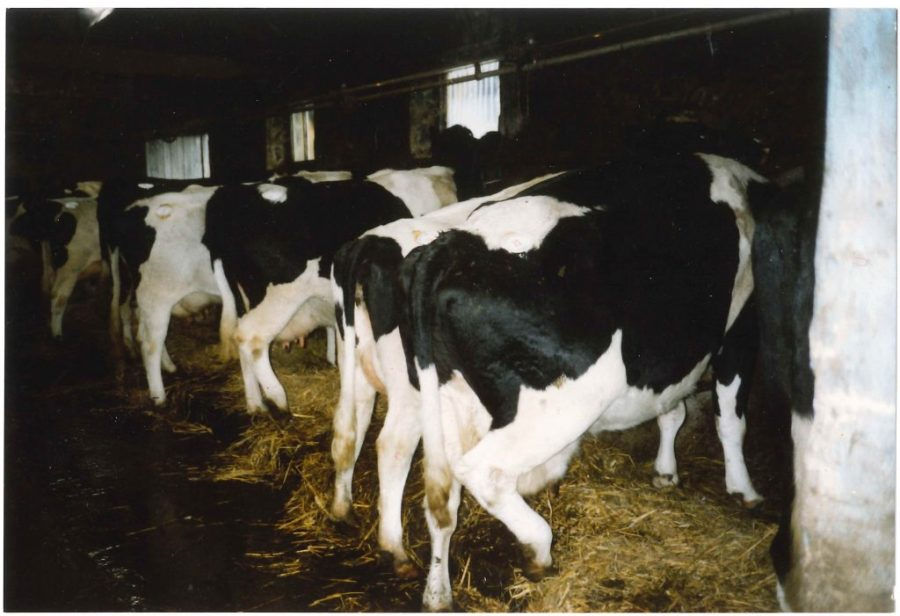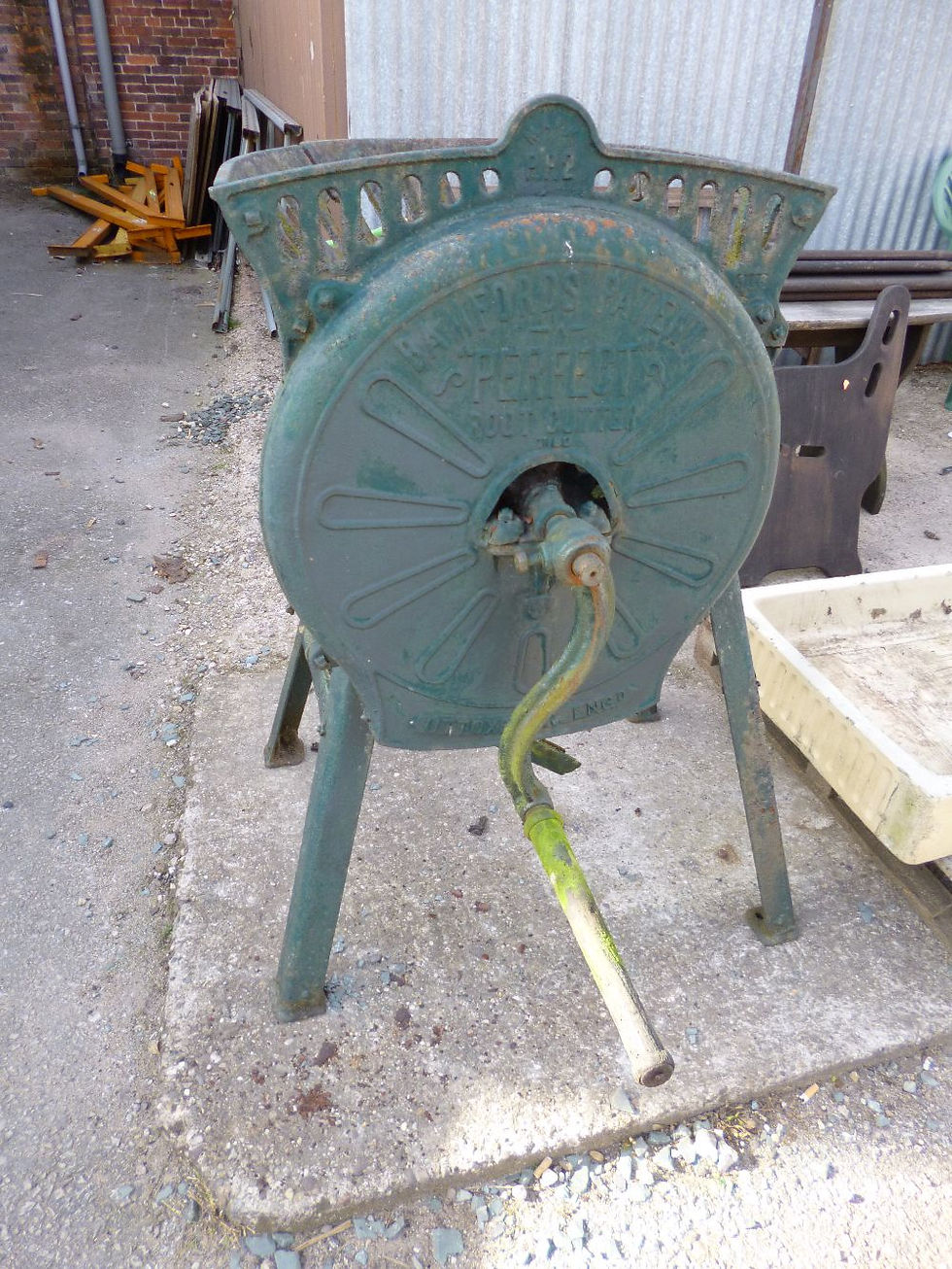
“A partnership is the formation of a group, as little as two, formal or informal, working for mutual benefit. Pieces of paper do not keep partnerships together, trust and mutual benefit are the essential ingredients to successful partnerships including marriage. Not just in good times but also in the bad.” - Peter McSporran
Environmental Partnerships
Crime series on TV are my favourite viewing escapism. Wildlife, Conservation and Farming are of great interest. Probably all in the reverse order by preference. Finally, food and antiques are general entertainment for me. Unfortunately, more often in the British Conservation, Wildlife and Environmental programs the word “Partnership”, comes up especially with the word “Sustainable.” Now my idea of a partnership can both be formal and informal with a benefit and risk to all of the partners. When it comes to rural areas many of the presenters glibly use these words when they are arguing their cause. What is obviously clear is the meaning of “sustainable” and “partnership” have a different interpretation to them and real rural dwellers, especially farmers. The political angle has increased to such an extent that I have ceased to watch rural programs which were a “must” a few years ago. Even Adam Henson, from Countryfile, was questioning his own farming methods while interviewing a farmer turned environmentalist. The gist of the interview was that it was more profitable to live off environmental grants than produce food. Can it not be seen that it is not sustainable?
I sadly read in last week's issue of the Scottish Farmer the reply given by a matriarch of a well known Blackface sheep breeding family on the future of the breed:
“I’m sure that the Blackface sheep shall flourish under the influence of science and non-farming money. I have been fortunate to have lived through times when a more natural approach to hill sheep was the norm.” - Mary McCall-Smith
How can diverse parties form a partnership if the parties do not define the keywords in the same manner? The farmer is sustainable if he looks after his farming environment, soils, water, flora, fauna and livestock while maintaining an income for himself and his family. To be sustainable he relies on a margin from his farm sales. The supporters and lobby groups of environmental change in the country look at the countryside as being sustainable just by letting it revert to how it was before mankind arrived. They certainly would not like you to revert to hunting and foraging. They take this even further including physical intervention such as planting trees, creating forests and wetlands. I have no problems with reintroducing indigenous woodlands but am against green deserts which many of the pine forests in Scotland are.

The problem is in everyday private life, marriage or cohabitation, joint ownership of a boat or a regular fishing friend are partnerships in my view. In business, joint ventures, investments and professional groupings are partnerships. In both the formal and informal sector partnerships have a common goal sharing both risk and benefit. Some may be active management participants, some sleeping, just supplying the cash or a portion of the cash all with a common goal. Now in the media, presenters and interviewees, especially environmental lobby groups and individuals confidently talk about their partnerships when they may have no common goal nor even a plan to work towards anything other than their own self-interest. I think all responsible rural dwellers care about the environment knowing that looking after it may have a cost. What I can see from viewing the more recent programs on the subject, the word “partnerships”, coupled with the word “sustainable”, are used purely for their own view of success. It seems that the farmer will have little choice in the matter especially, in seeing a reduction or complete loss of income as he moves towards environmental not financial sustainability. Just like being fired with little or no notice! The blow is said to be softened by Government grants. Certainly, the consumer will not be a great partner in the exercise of saving the environment or the farmers viability. The cost of production per unit, crop or livestock, will surely rise. The last thing the consumer wants is to share in this burden. This customer partner has reduced support of the British farmers’ income by reducing spend on food from 20% of income to below 10% in the last forty years. To achieve this they will buy from any source anywhere in the world. In real terms, most foodstuffs have reduced in price substantially in the last forty years. How can a litre of bottled water on a supermarket shelf cost double what a farmer is paid for his litre of milk? The consumer has no interest in the countryside if their food will cost more, they are not suitable partners. Many noisy advocates have little interest in the farmers welfare, nor are they sharing the risk. In fact, they sell their views as a career. That leaves the Government as a partner supplying the grants to sustain life in the rural areas. The Government from appeasing its “Green” critics, partially placating the farming lobby while getting cleaner water with other marginal benefits gets something out of the partnership. Cheaper food will be imported and as farming numbers decrease, the farming lobby will become less of a problem to the Government. Governments at best are poor partners. Policies, personalities and priorities change so they are unreliable fairweather partners. I think the farmer is in for a very difficult and disappointing time with their self-proclaimed partners. They have been driven into intensive cropping and livestock production from the consumer demanding cheaper food. Now the very same consumers are demanding change without paying the premium required selectively on the retail shelf. They even resort to laying around outside state buildings or blocking streets, even violent demonstrations whilst happily buying their mass-produced chicken on the way home for convenience. Oh, of course, the other senior partner, the Government, should pay for the loss of production, increased wetlands and even the tree planting if necessary. That makes all taxpayers in the UK partners in their schemes. Is this a viable solution? Farmers are the caretakers of their environment, they live there, not the self-proclaimed “champagne socialists” on arrival on your property shouting their needs of the landowner either from their four-wheel drive vehicles or more preferably through the media.
Trees are necessary but what will the long term effect of all these trees going to be? I know from experience as one who started removing non-indigenous trees from our land as they soaked up more water than traditional crops. It would appear to me the southern half of the UK is much drier. I wonder when the cry will no longer be, “You are polluting the rivers!” to, “Where are the rivers?” Someone will do a new study, possibly finding out the trees are the problem. Already in Scotland, they are changing habitats, I have seen it. On returning to Mull many of the hills I enjoyed fishing and shooting on have disappeared under a cloak of forests with only bare ground to be found under the canopy.
So environmental issues require much more commitment in true partnerships for the future working on a common goal for a sustainable outcome. Do not get me wrong there are many good programs and projects out there but the noisiest advocates would like to see a rural clearance, the impact of which will make the “Highland Clearances” small fry. Already sheep are fast disappearing as are cattle numbers on grazing land along with shepherds and mixed marginal farmers. In future, this new model will require state funding to be used to sustain the unsustainable instead of finding a rural integrated way of life.
"It is amazing what you can accomplish if you do not care who gets the credit." - Harry Truman
All Quiet on the Medical Front
Yippee! Without jinxing it, can a seventy-one-year-old say that?
Bothy Living
You may be surprised to learn I actually enjoyed my 10 months or so in a bothy. Firstly, being back on a farm made everything seem so much better. Yes, some bitter cold mornings even with a cab, not heated of course, were miserable but luckily I could spend much of my early morning winter days in cattle byres or cattle loose boxes which were always warm and comfortable. My room always had a roaring fire in the hearth. At that age, I slept well so I would wake up in a freezing room as I had no interest in topping up the coals during the night. Other than buying in cattle cake, all the stock indoors had to have hay for feeding, no silage produced, chopped turnips and straw for bedding. I would cartloads of turnips from the fields, hay and straw from the hay barns, large open steel structures to the various sheds and leased farms. Cattle outdoors were fed hay and cattle cake. West Cumberland Farmers were our stockfeed suppliers. Therefore, much of my days were spent loading hay and straw and carrying it into the sheds. No modern front end loaders, let alone telehandlers. This certainly did not allow for any body fat build-up. The worst jobs in winter were hand-harvesting turnips, which were also further chopped physically by hand before being fed along with repairing tile drains. Most of the fields had tile drains that were forever getting blocked. Edward and I would have to go and dig the burst drains out by hand, climb down into the freezing water and fix them. Edward afterwards would jump onto his cold tractor to plough or carry out some other outdoor work while I fled to the warm cattle sheds. Sometimes it pays to be unskilled. The most dangerous task I had was looking after the Ayrshire bull which was under my care. We went to the Pedigree Ayrshire sale in Ayr where my boss bought a very white Ayrshire bull that took a dislike to me from the day he arrived. Obviously he had not taken temperament into consideration. Getting into a cheeky dairy bulls pen to clean and feed the animal was a new experience for me. Give me Galloways or Aberdeen Angus any day. Much more placid.

Robert Baird was of the old school, so when his steers were sold they were dressed before going to market. That is their heads, backline and tails were clipped a few weeks before sale. A bit of a rodeo as they were housed loose in groups of up to ten untrained to the halter. They did look good when they left the farm. It must have been worth the effort as he was always pleased with the prices.
I was still sort of going out with Lorraine, who was still studying in London. The first few trips, about once a month for a weekend, were exciting, but soon became tedious. London weekends meant one night in London and two on the train going and coming back. Each way 12 hours overnight sitting upright as I could not afford a sleeper. These trips were not without excitement, one evening shortly after leaving Glasgow Central Station a full-blown gang fight erupted with people being stabbed and slashed while others jumped from the moving train. I had witnessed the occasional gang fight at school when passing through Glasgow by bus returning from rugby or attending theatre in the late evening. This one was completely different, as I was witnessing it close up embedded in the warring factions' midst. The downside to this event was the train was stopped, the police boarded and despite the long delay only a few of the walking wounded were arrested. The more violent instigating participants were long gone.
As my trips to London slowly but surely extended in intervals I started to go into Ayr on a Saturday night. There I would go to the nearest pub in Burns Square where I alighted from the bus, learning the serious business of hard-drinking from some local apprentices, bank clerks and townies. Local heroes to the local girls who had no time for a stranger with an even stranger accent. I would catch the last bus to Crosshill, the nearest to Cloyntie Farm, walking the final two kilometres home. This would be about midnight. I passed a graveyard on the way, this being especially creepy on dark stormy nights. I had read,”Tam O’ Shanter” so I was aware of what a few drinks could do to the imagination. Sometimes I would be lucky with the local policeman, a man from Skye, giving me a lift home. A “teuchter” bond?

On top of this, my boss would from time to time take me to see Ayr United play football along with teaching me curling, including me in his four when one of his team were unavailable. In summer we worked late most nights making hay which was a slow process due to the frequent rain delays. Leaving the farm was sure to bring the sun coupled with a message to “get your arse back here!” Best to stay at home and chat to the local youth including girls in the village. Because my accent was so different from theirs they used to think I must be from England. Towards the end of my time at Cloyntie, the Autumn of 1969 I started playing rugby for Keil Old Boys Club, which meant at the very least travelling to Glasgow. In September I set off to start my studies at Auchincruive. Some of my college friends will argue I never got around to studying the whole time I was there. This may be so, I did learn a lot though.
Knocking on Doors
In my travels in looking for a suitable African country to relocate I would follow up on opportunities being promoted by various NGOs and Governments. Often this would entail visiting failed schemes or projects. In fact, the successes were few and far between while there were plenty of failed ones to visit. Frequently the Governments of the said country, especially at Ministerial level, would promise you access to land, finance and support. This was always in an office or in an expensive restaurant in the country's capital. Be it NGO or Government officials they would all knowledgeably talk about the project as if they knew it intimately, nearly always hiding a facade of total ignorance of what was actually on the ground. I quickly learnt not to ask them how to get to the said project as no one would have had a clue. Needless to say, in both Tanzania and Mozambique, which seemed to offer the better of such opportunities, we visited a number of “on paper opportunities.” One especially that comes to mind was the old CIDA (Canadian International Development Agency) wheat project at Hanang, Tanzania. I put a group of Zimbabwe farmers together to go and have a look at it as the Tanzanian Minister of Agriculture assured us the land was available, cleared and lying vacant. There was even equipment available on site he said. Chris Thorne, Neville Baker, Kevin Connor and myself set off on a week's adventure by vehicle to see the said project. Some 26,000 hectares of land were cleared in 1968 to grow wheat to supply the nation. The project had cost $95 million in the 1960s, the equivalent of $740 million in today's money. Not far short of the British Groundnut Project in the southern part of the country which cost a billion pounds in today's money. Both failed although the wheat project did produce wheat, well above import parity price in one of the most isolated areas in the country. The project as was its sister project in Zambia was doomed to failure. It is said to have displaced some 40,000 people and increased poverty in the area as it was highly mechanised, offering little employment to unskilled rural dwellers. As a team we put together a business plan to look at broad acre farming there, only to learn a group of local Asians had been given the land. All the equipment and buildings, other than the offices, were no longer in working condition. We were probably lucky we did not succeed in getting the land, certainly, the Government would have not kept to its promises of support. The access roads, some 740 kilometres, were dreadful, mostly poor gravel. At least we saw a group of wild dogs on the way, along with a spectacular part of the country including many extinct volcano craters. We also encountered some wild and woolly heavily armed men hurtling around in land cruisers. They showed no interest in us, luckily. I also looked at the CIDA project in Zambia later where the land, soil and rainfall impressed me. I set up a seed potato project there funded by AgDevCo with Kevin Connor as a partner on a farm down the road as the lead potato seed farmer. This was some 15 years later. Agriculture takes time to put together.
Disclaimer: Copyright Peter McSporran. The content in this blog represents my personal views and does not reflect corporate entities.
Comments